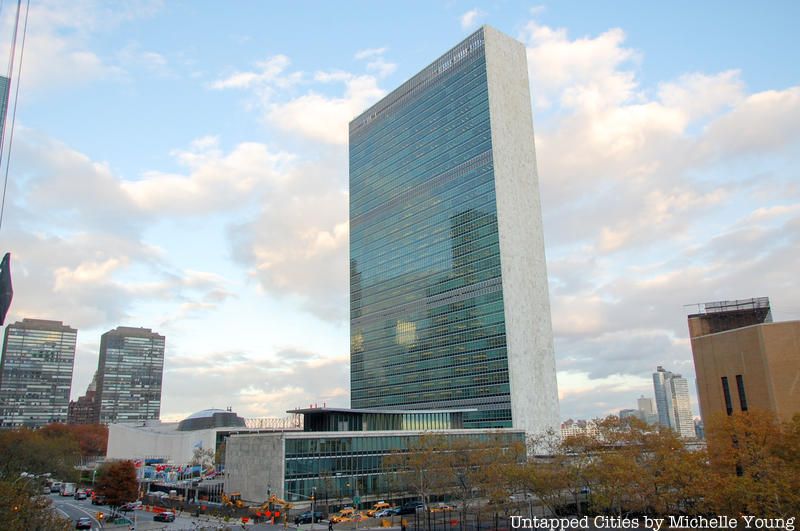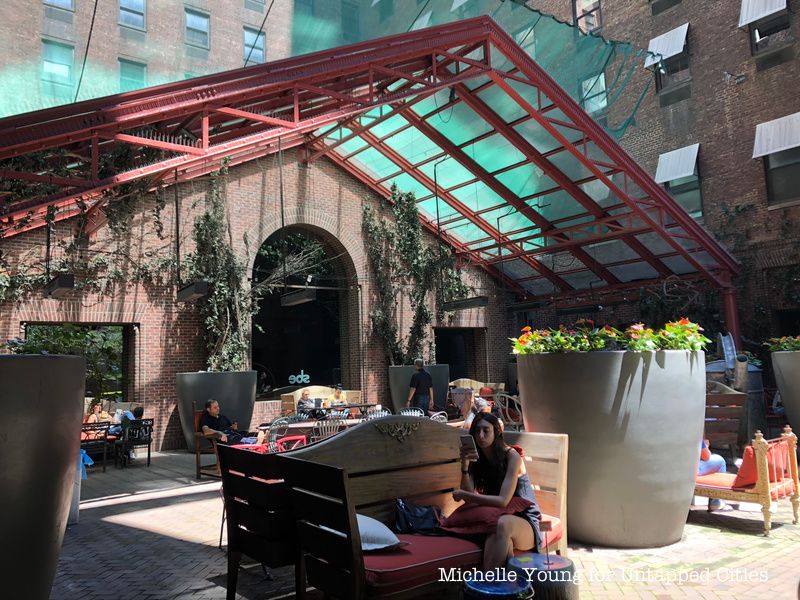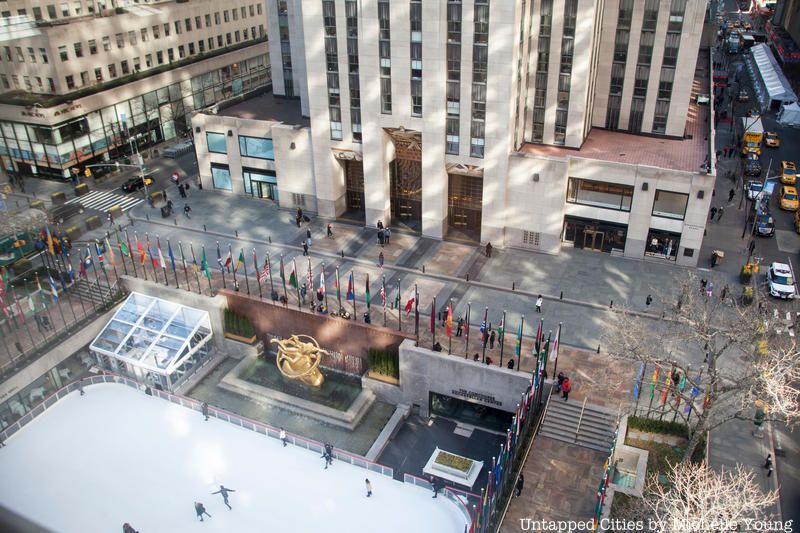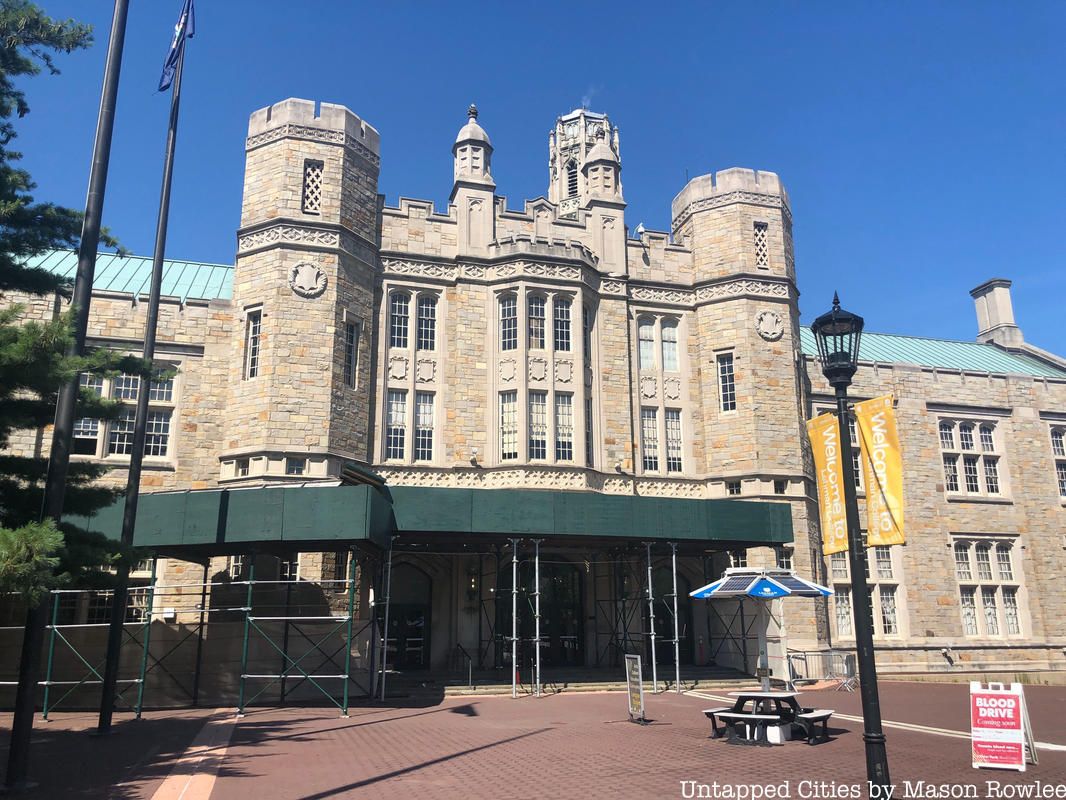Last-Minute NYC Holiday Gift Guide 🎁
We’ve created a holiday gift guide with presents for the intrepid New Yorker that should arrive just in time—



Most New Yorkers are familiar with the United Nations headquarters located in Turtle Bay. Its International Style Secretariat and General Assembly Buildings have become icons of the skyline of Manhattan’s East Side. It might come as a surprise that the General Assembly and the Security Council have not always met at this location. From its humble beginnings at London’s Central Methodist Hall to Paris’ Palais de Chaillot, the United Nations was a vagabond until gaining its permanent home. Here, we explore 5 locations in which the United Nations has been housed in the State of New York.

The Henry Hudson Hotel was constructed in 1929 as the American Woman’s Association, which was led by J.P. Morgan’s daughter, Anne Morgan. The hotel, which was designed by Benjamin Wistar Morris, was constructed across the street from the proposed site of the Metropolitan Opera House. The building had 1,250 rooms, a swimming pool, gym, meeting rooms, a restaurant, and music rooms. In 1941, insolvent, the association sold the building and it was converted to the Henry Hudson Hotel.
In 1946, the hotel served as one of locations the transient United Nations Security Council used to meet. It was also where the International Health Conference was held, which led to the creation of the World Health Organization. It was remodeled in 1999, but still retains much of its original character.

The General Assembly considered using Rockefeller Center as a temporary home for its six week session in 1946. Ultimately, the UN did not select Rockefeller Center for this purpose as it staff would have had to commute between it and the Bronx and Long Island where the rest of the organization was located, though Rockefeller had offered the theater rent free. Additionally, the New York Times reported that had the United Nations selected the Rockefeller Center, they might have been forced to cover the payroll for the “twenty-four musicians, ninety-two figure skaters, thirty-four stagehands, six ice attendants and other personnel,” which would have been another cost the fledgling organization wouldn’t have wanted to borne.
However, the United Nations did retain some office space at Rockefeller Center. In 1947, the Headquarters Advisory Committee met in the Secretary General’s offices at 610 Fifth Avenue, Rockefeller Center, where they chose Wallace K. Harrison as Director of Planning for the future permanent site of the United Nations. Harrison had previously served as architect for Rockefeller Center.
Read about 10 other Secrets at Rockefeller Center.

Between March 25 until August 15 1946, the United Nations was headquartered at Hunter College’s Bronx Campus (now Lehman College). Workers adapted the campus, which had been used by the Navy during the War, for the United Nations’ use. One of the workers who carefully crafted the delegates’ first ballot box, left a note later found by the United Nations, which read: “Let me cast the first ballot for world peace.” There were discussions regarding using the nearby Kingsbridge Armory to house the General Assembly, but it fell through. There were also complaints from students and faculty regarding the United Nations’ use of the facilities, at a time when the CUNY system needed all of the classroom space it could find. Today, a small plaque commemorates the United Nations’ tenure in the Bronx, for what Bronx Borough President at the time said “History will record that the Bronx was the first capital of the world.”

The New York City Building was constructed for the 1939 World’s Fair in Flushing Meadows-Corona Park and designed by Aymar Embury II. After the fair, the building served as both a roller skating rink and an ice skating rink. Between 1946 and 1950, the New York City Building was the home of the United Nations General Assembly. On November 29, 1947, as one of its first acts, the General Assembly passed a resolution creating the State of Israel, and as one of its last acts there in 1950, the General Assembly raised the Israeli flag over the New York City Building.
After the United Nations departed from Flushing, the building returned to its use as a skater rink, it would be incorporated into the 1964 World’s Fair and is currently home to the Queens Museum. Today, it is the only remaining building from the 1939 World’s Fair (though a time capsule is still buried deep below ground).
Read about 10 other secrets of Flushing Meadows-Corona Park.

The Sperry Gyroscope Corporation Headquarters was constructed in Lake Success, Long Island in 1941 and operated, under government contract, by the Sperry Corporation. Between 1947 and 1952 the United Nations met at the site. The site continued to be used for defense contracting and was owned by Lockheed Martin. In recent years it has been converted into a Northwell Health hospital facility.
The General Assembly considered the location for themselves because it was air conditioned and modern, however it would have cost around one million dollars to reconfigure the space for them. When the Security Council met there in 1947, they discussed disarmament, international control, of atomic energy, and Triestse. At least some of the sessions were open to the public.

Many cities in the United States wanted to house the United Nations, from San Francisco (which the Australians favored), Boston, (which no one was impressed by), Detroit, Chicago, the Black Hills, Beloit, Wisconsin, Claremore, Oklahoma, and even a joint Westchester/Fairfield bid almost became a reality, save for local opposition (the residents of Harrison were worried about its impact on their taxes and their schools). Ultimately, the United Nations settled on Manhattan as the site for their new headquarters. The United Nations complex was constructed on land donated by the Rockefellers that had been full of slaughterhouses. The design was overseen by a world renowned team of architects including Oscar Niemeyer and Le Corbusier. The complex was completed in 1952 and is still serving its original function more than half a century later.
Next, did you know you can eat lunch at the United Nations? Also, take a photo tour of the renovated United Nations complex.
Subscribe to our newsletter